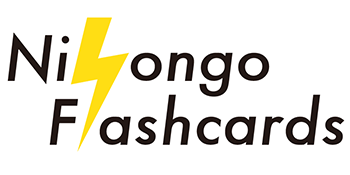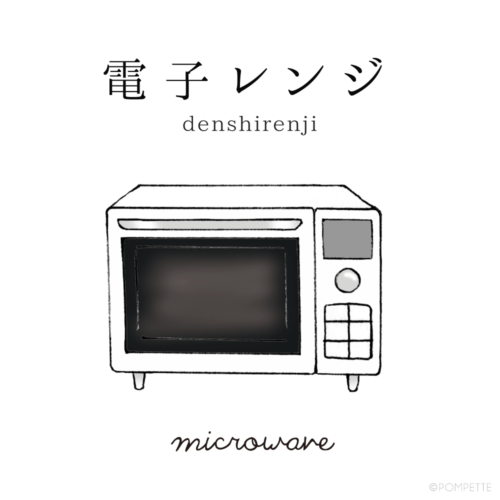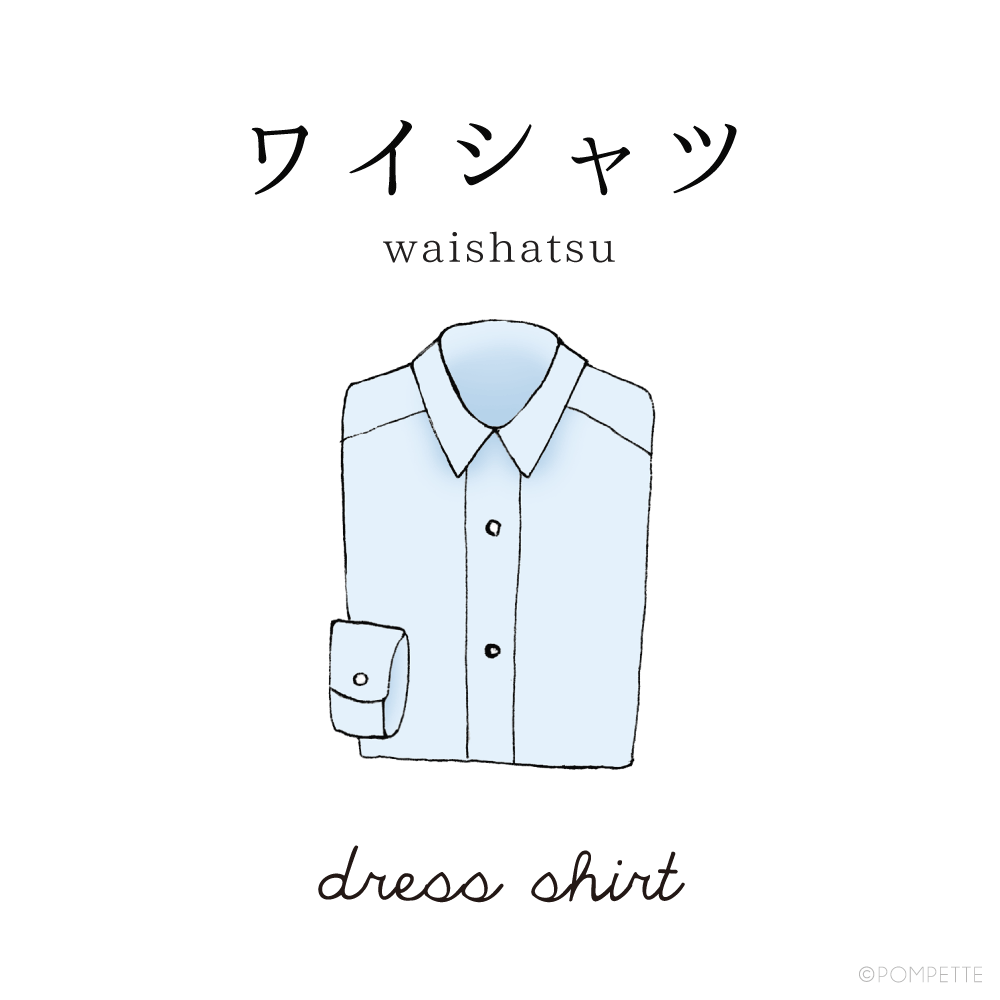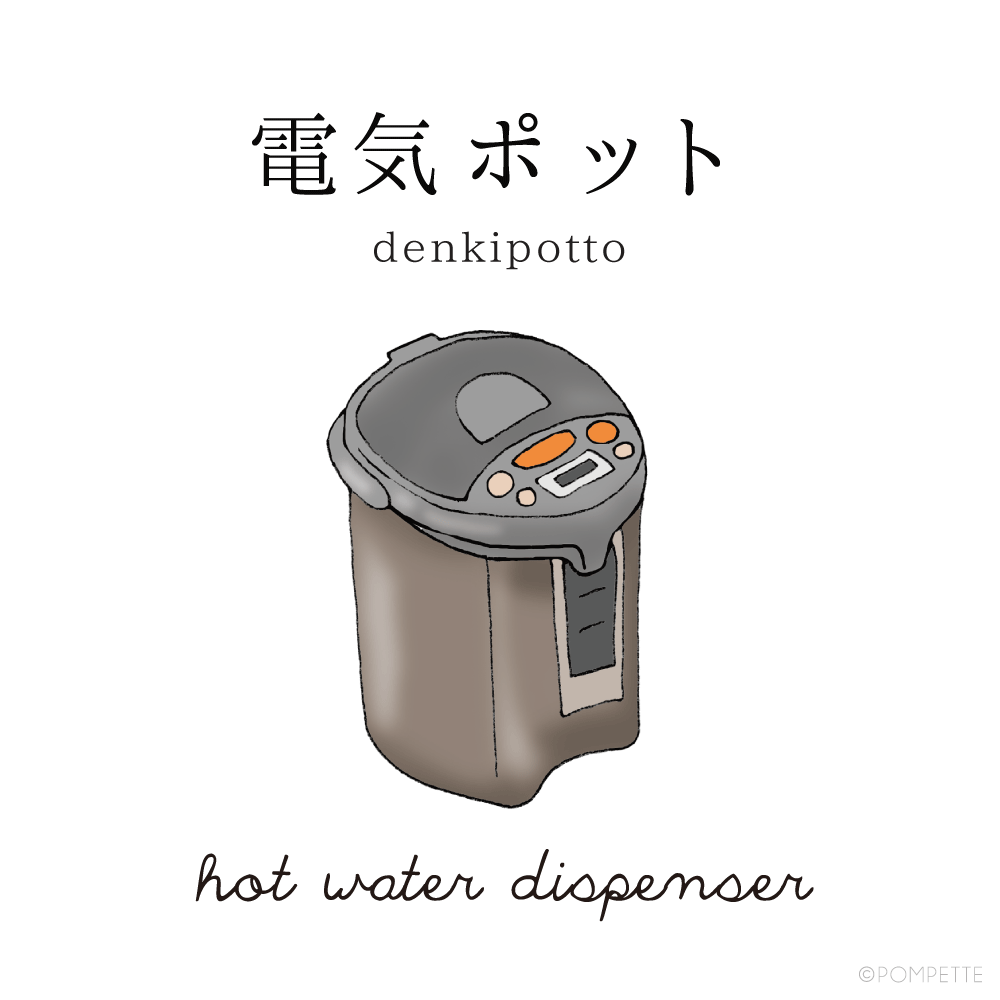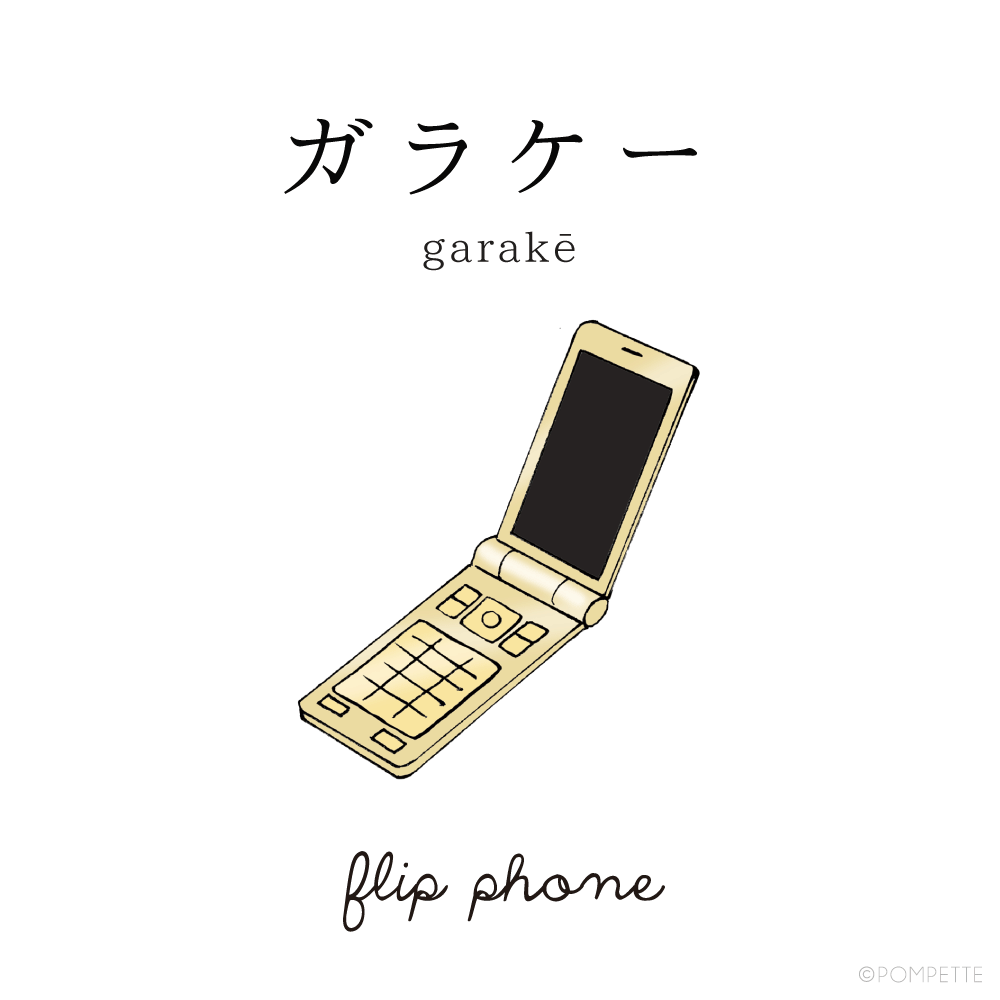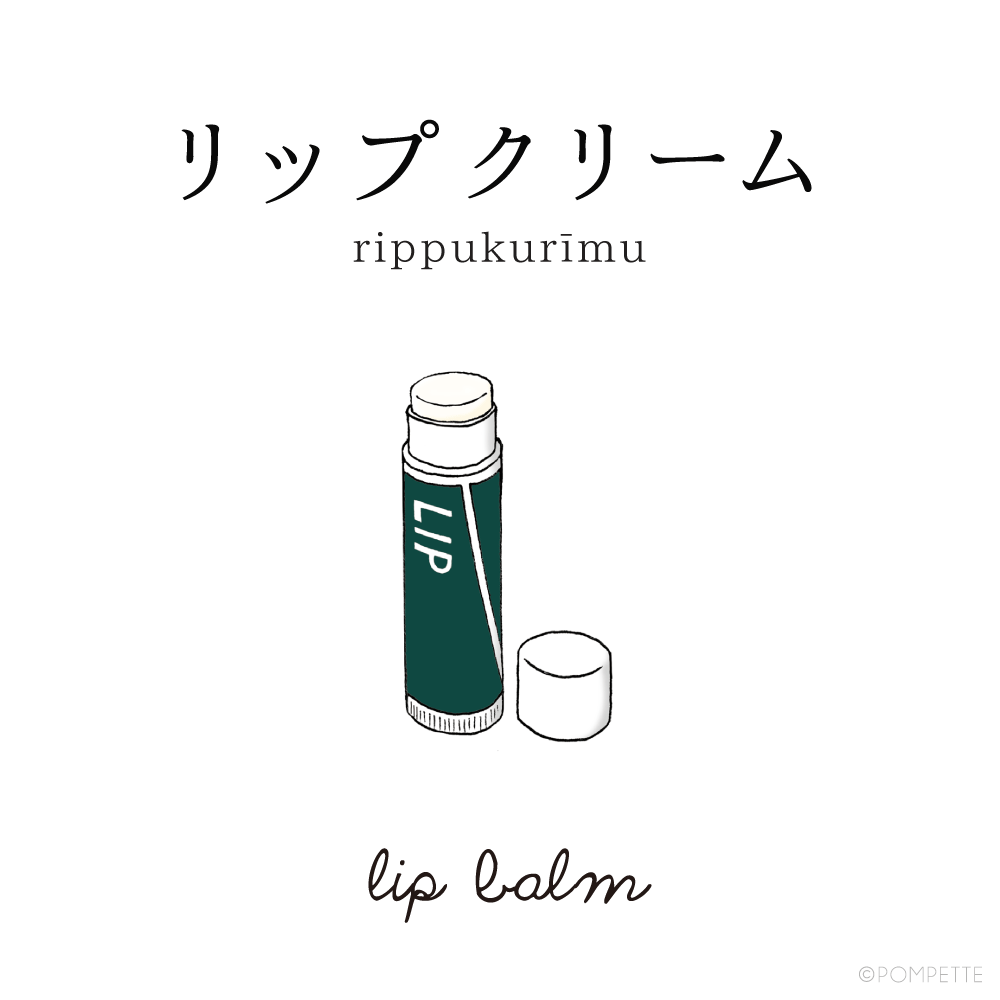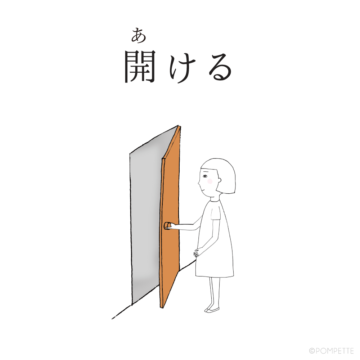【 電子レンジ (denshirenji) 】microwave oven
電子 is “electronic,” and レンジ is “cooking stove,” making 電子レンジ an “electronic oven.” It’s common to shorten 電子レンジ to レンジ, and in Japanese, we say 「チンする」for heating food in the microwave.
レンジでチンする
heat in the microwave
The word「チン」is an onomatopoeia for the timer bell in earlier microwave models. Even though the timer bell has evolved into an electronic beeping sound, we still say チンする.
—
「ごはんが冷めちゃった。ちょっとチンしよう。」
The food got cold. Let’s reheat it.
「何分チンしたらいい?」
How many minutes should I heat it?
「2分ぐらい。」
Maybe two minutes.
*ボン*
(bursting sound)
「あ、チンしすぎた!」
Oops, I overheated it!
「あちゃ。」
Oh, dear.
—
The First Japanese Microwave
Toshiba introduced the first domestically manufactured microwave in 1959. From there, Hitachi, Sharp, and Panasonic (all formerly under different names) came out with new microwaves one after the other.
The model that Panasonic introduced in 1963 propelled the popularization of microwaves, but microwaves were expensive at that time. The Panasonic model was 115万円 ($10,000). So it wasn’t until the late 1970s that general households were able to afford one at around $500.
ー
Learn more wasei-eigo in the home here!
